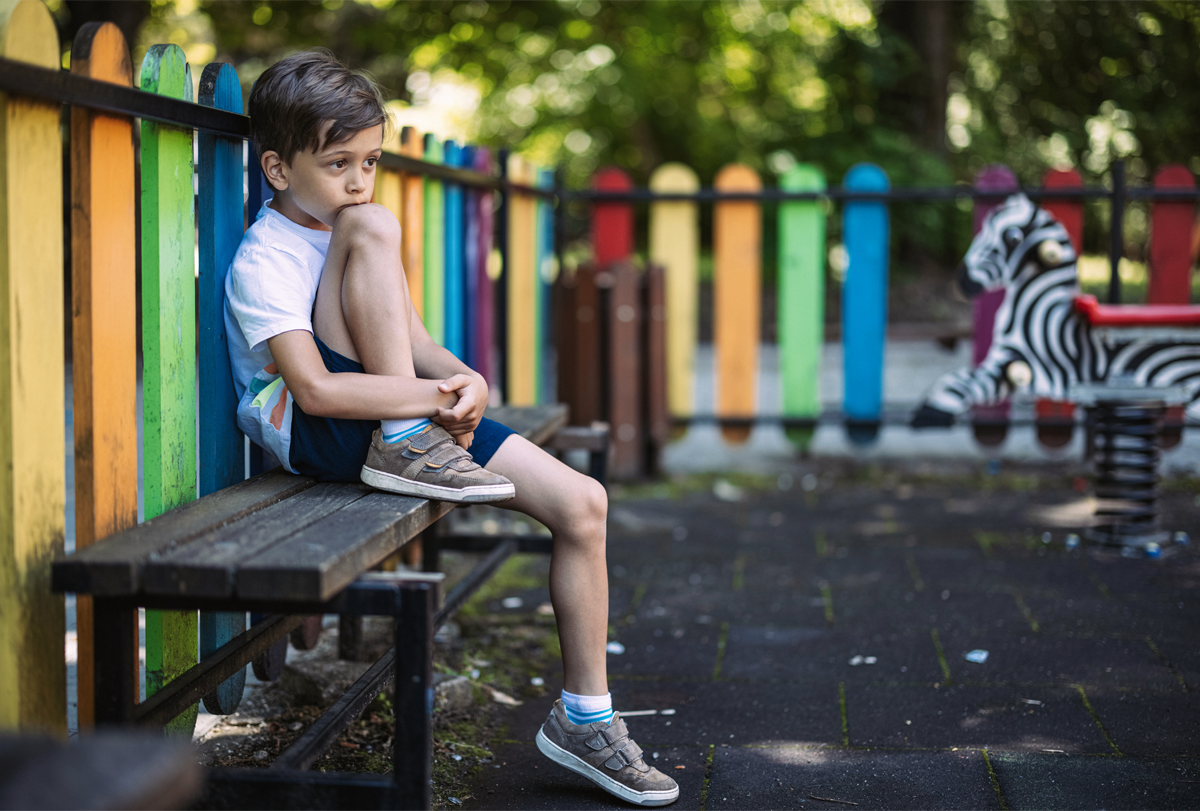Both an increase in the severity of social-communication issues and a decrease in restricted and repetitive behaviors over time could up an autistic child’s vulnerability to anxiety and other mental health conditions, a new study finds.
These findings underscore the notion that some restricted and repetitive behaviors may help autistic people. “Perhaps not all types of repetitive behaviors should be a therapeutic target,” says co-investigator Einat Waizbard-Bartov, a graduate student researcher of psychology at the University of California, Davis. “Our findings caution clinicians to consider the value of attempting to eliminate repetitive behaviors from an autistic child’s behavioral repertoire.”
Autistic children often experience changes in the severity of their autism traits during their grade-school years. Trait severity increases in 16 percent of autistic children from ages 6 to 11 and decreases in 12 percent of autistic children in this age range, according to a previous study.
Many mental health challenges also develop during middle childhood, loosely defined as ages 6 to 12. About 70 percent of autistic children have at least one mental health condition, and 41 percent have two or more, prior work has found.
To see if changes in autism trait severity during middle childhood are associated with mental health issues, Waizbard-Bartov and her colleagues analyzed data on 75 autistic children aged 6 to 11, of whom 15 were girls. As part of the larger Autism Phenome Project, the researchers tracked the changes in autism traits in these children from ages 2 and 3 through adolescence, using the Autism Diagnostic Observation Schedule Calibrated Severity Score, as well as specialized tests focused on social traits and restricted and repetitive behaviors. They also assessed mental health symptoms through parental interviews and questionnaires.
A
bout 21 percent of the children showed increasing severity of social-communication issues. They also displayed elevated levels of anxiety, attention-deficit/hyperactivity disorder (ADHD) traits and disruptive behavior problems, which increased over time.And nearly 23 percent of the children showed decreasing severity of restricted and repetitive behaviors. But they also displayed higher levels of anxiety that increased over time, with 94 percent of these children meeting the criteria for an anxiety disorder. (There was only a 30 percent overlap between children with decreasing restricted and repetitive behaviors and those with increasing social-communication issues.)
“If these children do repetitive behaviors as a self-regulation mechanism, then not performing them, in addition to the mental effort of intentionally reducing them, may lead to an increase of their anxiety,” says lead investigator David Amaral, distinguished professor of psychiatry and behavioral sciences at the University of California, Davis MIND Institute. Supporting this interpretation, those children who showed increased severity in restricted and repetitive behaviors had fewer mental health challenges. The scientists detailed their findings online in September in Autism.
Amaral cautions that although the Autism Diagnostic Observation Schedule focuses on specific types of restricted and repetitive behaviors, such as spinning in circles or lining up toy cars, these behaviors include a much broader group of activities. Waizbard-Bartov suggests that using more thorough and comprehensive measures for these behaviors could indicate which ones are most linked to anxiety.
She says she would also like future studies to replicate the findings with larger groups of children and expand the investigation to explore the efficacy of interventions focused on self-regulation.





